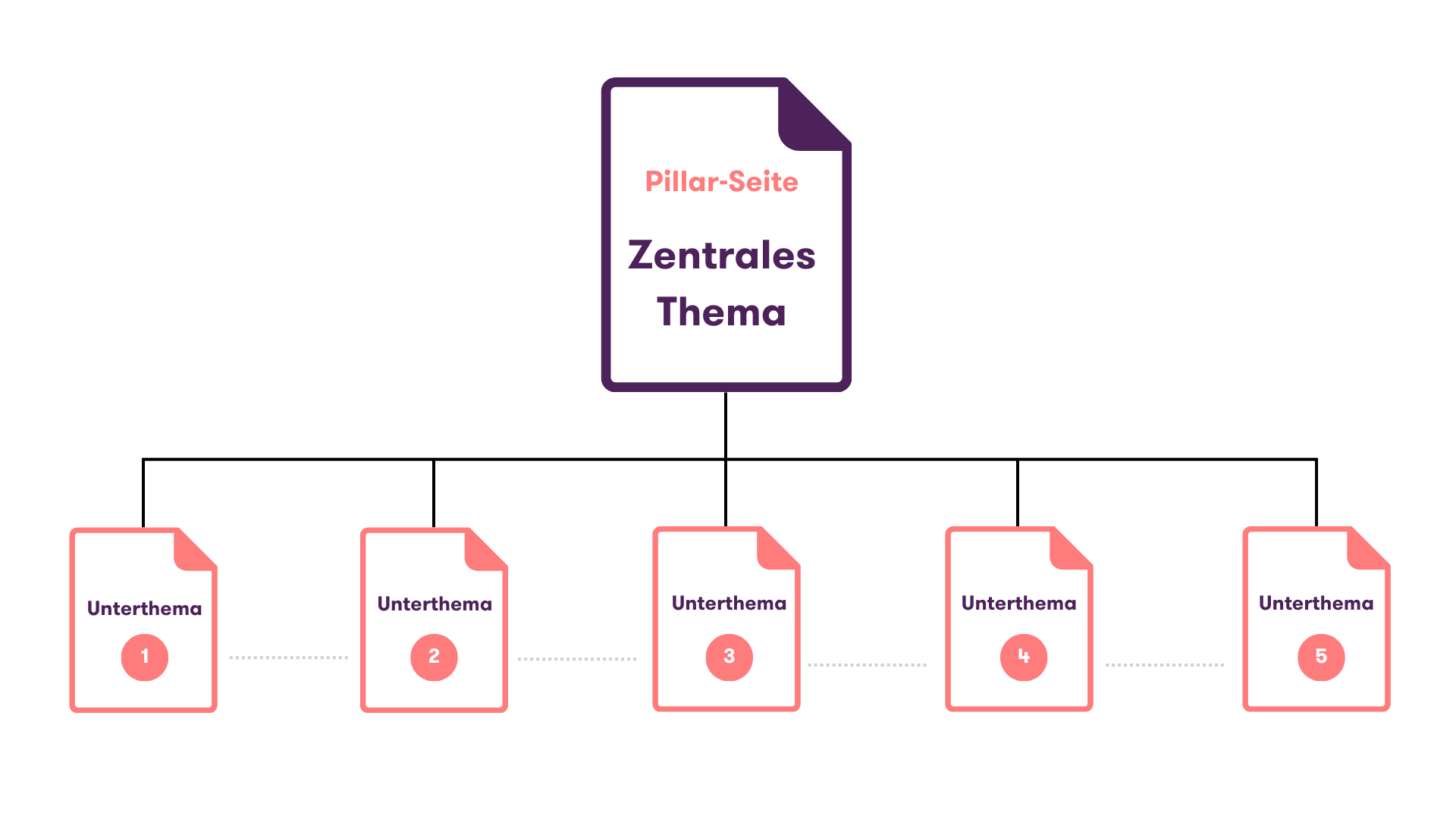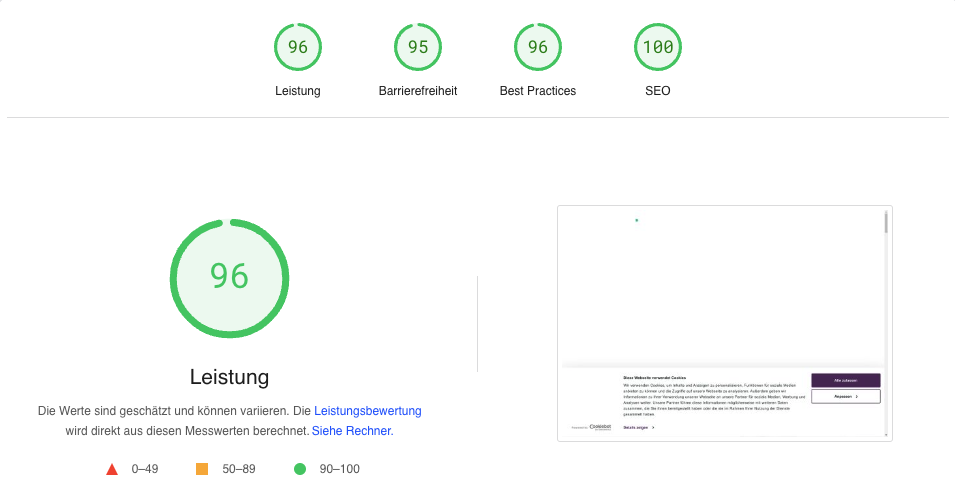Many companies underestimate the value of organic search traffic, even though it offers long-term benefits. It takes time and perseverance to build up, but a well thought-out SEO strategy is essential for all website and shop operators and is definitely worthwhile. Effective SEO helps to be visible in the long term and thus promotes overall business success. In the following blog post, we explain the importance of an SEO strategy for your company and show you how you can develop a successful SEO strategy step by step.
What is an SEO strategy?
An SEO strategy is a comprehensive plan for improving the visibility and ranking of a website in search engine results. The aim is to drive more quality traffic to the website by ensuring that it ranks highly for relevant keywords and phrases. An effective SEO strategy takes into account various aspects such as on-page SEO, off-page SEO and technical SEO.
Why do you need an SEO strategy?
Search engine optimisation, or SEO for short, is a crucial process for companies to become visible on the internet. As more and more people search for products and services online, it is of great importance that a website appears high up in the search engine results - especially on Google or Bing. This is achieved through targeted SEO measures.
A good SEO ranking brings numerous advantages for a company:
- Increased visitor numbers: The higher your website ranks in the search results, the more potential customers will visit it. A place on the first page of Google often leads to a significant increase in traffic.
- Strengthening brand trust: A good position in the search engine results pages (SERPs) strengthens trust in your brand. Users associate a high ranking with relevance and trustworthiness, which has a positive influence on the brand image.
- Increasing the conversion rate: More website visitors mean greater opportunities for conversions, be it the purchase of a product or the use of a service. Targeted SEO measures attract relevant visitors who are more likely to become customers.
- Sales growth: Ultimately, higher conversions lead to more sales, which is the main goal of almost any business activity. An effective SEO strategy therefore contributes directly to the economic success of your company.
The central measures of search engine optimisation include optimising content, improving the technical website structure and ensuring the quality of the backlink profile. A comprehensive SEO strategy combines these elements to achieve a sustainable effect. Successful SEO is always designed for the long term and takes time to develop its full effect. Targeted efforts not only improve the visibility of a website in the long term, but also its overall performance on the internet.
Developing an SEO strategy: 8 steps to success
Now you know about the importance of an SEO strategy. In the following chapters, we will provide you with a guide on how to develop your own SEO strategy in 8 steps. We will guide you through the entire process and give you valuable tips on how to optimise your website for search engines.
1: Analyse your current SEO performance
In order to develop an effective SEO strategy, it is essential to first gain a comprehensive overview of your current SEO performance. This first step serves to identify the strengths and weaknesses of your website and create the basis for targeted optimisation measures.
There are numerous SEO tools that you can use to analyse your SEO performance in more detail. An excellent and free tool for analysing performance, for example, is the Google Search Console (formerly known as Google Webmaster Tools). With this tool, you can see which of your pages are visited the most and which receive less attention. This information is important to understand which content is well received by your target audience and which pages may need to be optimised.

For a more in-depth analysis, it is recommended that you also use a professional SEO tool such as SISTRIX or Semrush. These tools not only provide insight into your rankings for specific keywords, but also allow you to compare your performance directly with the competition. This comparative analysis can be insightful to determine in which areas your competitors may have an edge and where you need to adjust your strategy to improve your visibility.
The combination of Google Search Console and an advanced tool such as SISTRIX or Semrush will ultimately provide you with a sound basis for setting clear goals for your SEO strategy in the next step.
2: Set clear goals and KPIs
After you have gained an overview, it is crucial to define clear goals and key performance indicators (KPIs) when developing an SEO strategy. These must be urgently aligned with the overarching business objectives and provide a guideline for the implementation and evaluation of SEO measures. They show how SEO can contribute to achieving the company's overall goals.
It is therefore important to first develop a deep understanding of the long-term business goals. Whether it is to increase sales, raise brand awareness or tap into new markets, each goal can be supported by specific SEO strategies.
Based on the business objectives, specific SEO goals should then be defined. These goals should be specific, measurable, achievable, relevant and time-bound (SMART). Possible goals for this could be, for example:
- Increase organic traffic by 20% within the next year
- Increase the conversion rate from the search engine results page (SERP) by 5% in six months.
- Improve the position for certain keywords to appear in the top 5 Google search results.
KPIs are crucial to measure the success of your SEO goals. They should be directly linked to the goals and provide clear benchmarks to track progress. Possible KPIs for SEO could include:
- Organic traffic: The number of visitors who come to the website via search engines.
- SERP positioning: The average position of important keywords.
- Click-through rate (CTR): The percentage of users who click on a link in the search results.
- Bounce rate: The percentage of users who leave the website after visiting just one page.
- Backlinks: The number and quality of inbound links from other websites.
3. Start with the keyword research
After you have analysed the status quo and set your goals, you need to carry out thorough keyword research. This is an important part of any effective SEO strategy and aims to identify the terms and phrases that your potential customers use when searching for the products, services or information that your website offers. This step is crucial to ensure that your content is found by the right users.
Start by brainstorming terms that describe your company and your products or services. Think about synonyms and alternative formulations. For example, a travel agency could consider terms such as "book holidays", "travel offers" or "last-minute trips". We also recommend using the Google Keyword Planner to collect new keyword ideas and get an overview of search volumes.

Then create a list of these keywords and categorise them according to relevance and search volume. Make sure to choose a mix of short keywords (short-tail) and longer, more specific phrases (long-tail). Short-tail keywords such as "travel" have a high search volume, but also high competition, while long-tail keywords such as "cheap last-minute trips to Spain" are more specific and often less competitive.
It is also worth considering the keywords of the competition. You can use the aforementioned SEO tools such as SISTRIX and Semrush to see which keywords your competitors are ranking for. Then select keywords that are highly relevant to your content, have an appropriate search volume and for which you can realistically prevail against the existing competition.
4. Define cluster content
Another step is to structure your content by creating content clusters. This approach helps to strengthen the authority of your website and improves your visibility in search engines.
The first step is to define pillar pages. These are comprehensive, informative main pages that provide a broad overview of a relevant main topic. They should be of high quality and informative in order to serve as a central point of contact for both users and search engines. An example of a pillar page at a digital marketing agency could be "Online Marketing Strategies", which covers various aspects of digital marketing.
You then build clusters of more specific articles around each pillar page. These cluster articles address related subtopics or specific questions and keywords that belong to the main topic. For example, cluster articles such as "SEO for beginners", "Social media marketing tips" and "Email marketing best practices" could be created for the "Online marketing strategies" pillar page. Internal links between the cluster articles and the corresponding pillar page strengthen the thematic relevance and internal link structure of your website.
 The advantage of defining clustered content is that it not only improves the SEO of your website through a clearer structure and better linking, but also increases the user experience by making it easier for visitors to learn more about specific topics.
The advantage of defining clustered content is that it not only improves the SEO of your website through a clearer structure and better linking, but also increases the user experience by making it easier for visitors to learn more about specific topics.
5. Improve your on-page SEO
Now it's finally time for implementation. In this step, you will carry out optimisation on your website to increase your visibility and the ranking of your site in search engines.
Onpage SEO includes the optimisation of:
- Content
- Titles
- Meta descriptions
- Headings
- Alt texts for images
Start by checking the quality of every piece of content on your website. Make sure that your texts are informative, well-researched and user-friendly. Content should fulfil a clear user promise and precisely meet the search intentions of your visitors. To do this, be sure to include the previously defined relevant keywords in the content.
In addition, each page should have a unique and meaningful title as well as a concise meta description that contains the defined keywords and attracts the user's attention. The headline structure should be clear and logical to improve readability for visitors and be optimised from an SEO perspective.
Another important aspect of your on-page SEO strategy is regular blogging. By continuously creating new blog posts, your website remains dynamic and always offers fresh content that is attractive to both search engines and users. In addition, the blog is an excellent tool for ranking for new keywords with posts without having to adapt the existing content on the website. Schedule regular blog posts to keep your website up to date and encourage repeat visits.
6. Address the technical SEO issues
In addition to on-page SEO, technical SEO is also part of a successful SEO strategy. Without a solid technical foundation, even the best content cannot realise its full potential. The most common technical SEO problems include slow loading times, insufficient mobile optimisation and incorrect indexing.
Make sure that your website loads quickly by compressing images and removing unnecessary scripts. A fast loading time not only improves the user experience, but is also an important ranking factor for search engines. Check whether your website works properly on all devices, especially mobile devices. PageSpeed Insights is a good free tool for this purpose.

Another common problem is indexing. Make sure that all important pages are indexed by search engines. Check your Robots.txt file and sitemap to make sure nothing essential is being blocked.
By fixing technical SEO issues, you create a stable foundation for your content to shine and ensure that your pages rank even better in search results.
7. Optimise your off-page SEO with backlinks
As a third and final optimisation measure, you should also look at off-page SEO. Off-page SEO refers to measures outside of your own website to improve its ranking. It is crucial for the authority of your own website, which is rewarded by Google with higher rankings.
A central aspect of this are backlinks, i.e. links from other websites that refer to your website. These links signal to search engines that your content is valuable and trustworthy. However, not every backlink is equally valuable.
Identify relevant and high-quality websites in your industry first. These can be:
- News and media websites
- Business journals and magazines
- Education and research institutions
- Partners and suppliers
- Influencers and opinion leaders
- Forums and communities
Make sure that these sites themselves have a high authority and good reputation. A backlink from a renowned site such as a trade magazine, for example, carries more weight than a link from an unknown site.
The next step is to publish a guest post on the external website. This could be an interview, a company presentation, a field report or other exciting research results from your company. Such guest posts are an excellent opportunity to present your expertise and at the same time receive valuable backlinks. Therefore, make sure that your post is unique, informative and tailored to the website's target audience. This will maximise the chances of your post being accepted and linked to.
8. Measure and analyse the results
Optimising content for search engines can take a lot of time and resources. It is therefore important that you carefully measure and analyse the results of your SEO measures to ensure that your efforts are bearing fruit. There are various indicators available to you for this purpose, which you should monitor on a regular basis.
Our tip: Create a dashboard with Google Looker Studio and record key figures on indexed pages, loading times, leads, backlinks, keywords and search engine rankings. This data will help you to maintain an overview and evaluate the effectiveness of your strategy. Finally, don't forget to optimise and update your existing content on an ongoing basis to ensure good SEO performance.
Tips for a successful SEO strategy
A successful SEO strategy requires careful planning, constant adaptation and a deep understanding of the ever-changing search engine algorithms. Here are our top three tips for your SEO strategy:
- Patience and continuity: SEO success doesn't happen overnight. It requires continuous effort and a long-term perspective. Stay patient and consistent in your efforts to achieve sustainable results. It will be worth it!
- Analysis: Accurately analysing your SEO performance is crucial. Use good SEO tools to monitor important metrics. Interpret the figures correctly to identify successful measures and recognise ineffective strategies.
- Adapt: It cannot be emphasised often enough: SEO strategies are dynamic and need to be adapted regularly. React flexibly to changes in search engine algorithms and adapt your strategies accordingly to continuously improve your rankings and the visibility of your website.
Conclusion
Many companies underestimate the value of organic search traffic, even though it offers significant long-term benefits. It takes time and perseverance to build up, but a well thought-out SEO strategy is essential for website and shop operators and is definitely worthwhile. Effective SEO promotes sustainable visibility and supports overall business success.
Do you need support in developing your SEO strategy? Get in touch with us contact us - we will be happy to help you!








